Affiliate links on Android Authority may earn us a commission. Learn more.
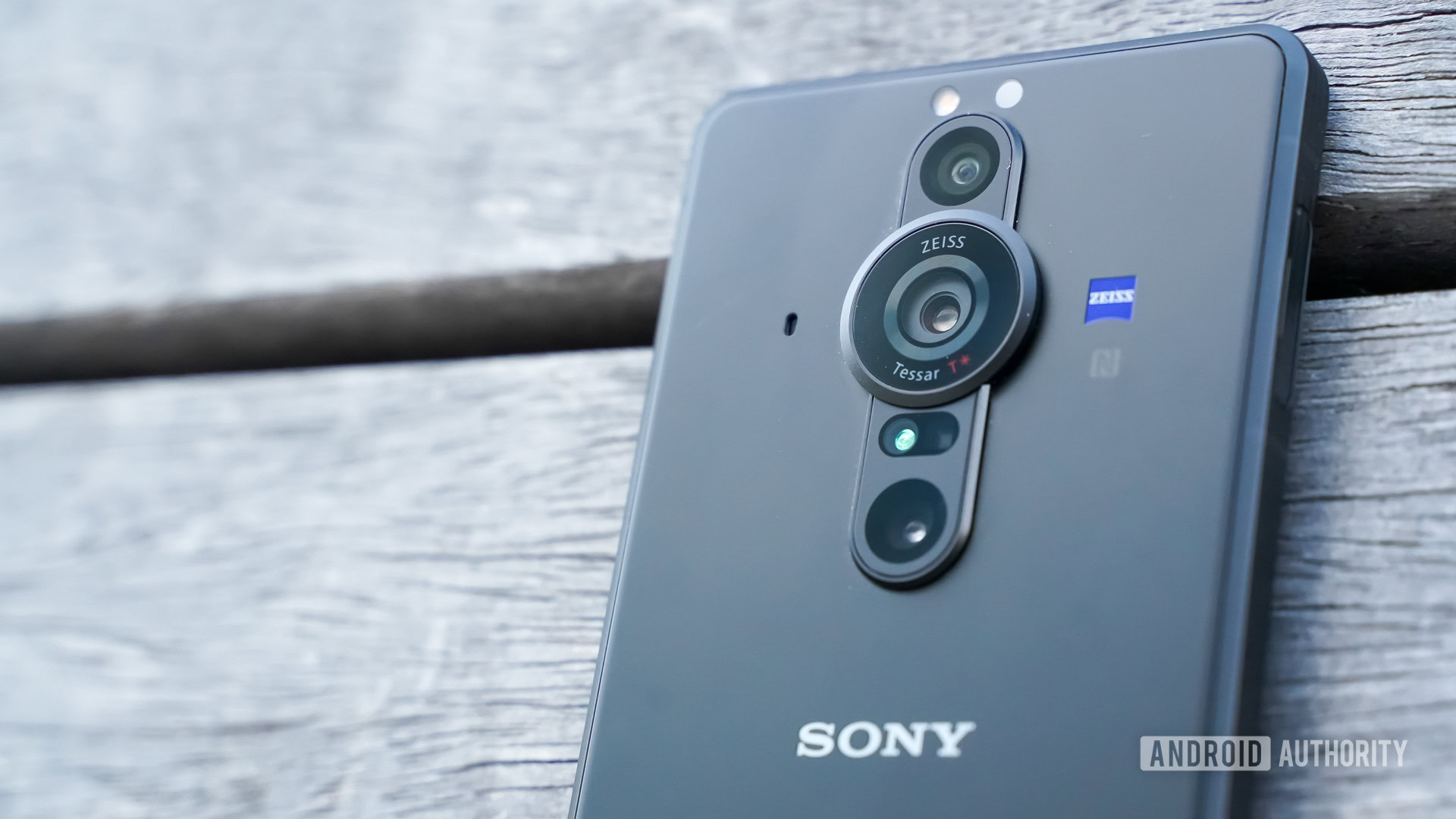
Sony Xperia Pro-I
MSRP:
What we like
What we don't like
Our scores
Sony Xperia Pro-I
The Xperia Pro-I is Sony’s professional-grade imaging smartphone. It follows 2020’s Xperia Pro, and specializes in photography and videography, thanks to its massive camera sensor and advanced capture applications. Surprising no one, the Xperia Pro-I carries a sky-high price tag along with its “pro” moniker. Does the phone earn its name and its cost? More importantly, does it deliver on Sony’s promise of an unsurpassed camera experience for advanced users? Find out in the Android Authority Sony Xperia Pro-I review.
Update, May 2023: We have updated this review with more information about competition in 2023, and more.
What you need to know about the Sony Xperia Pro-I
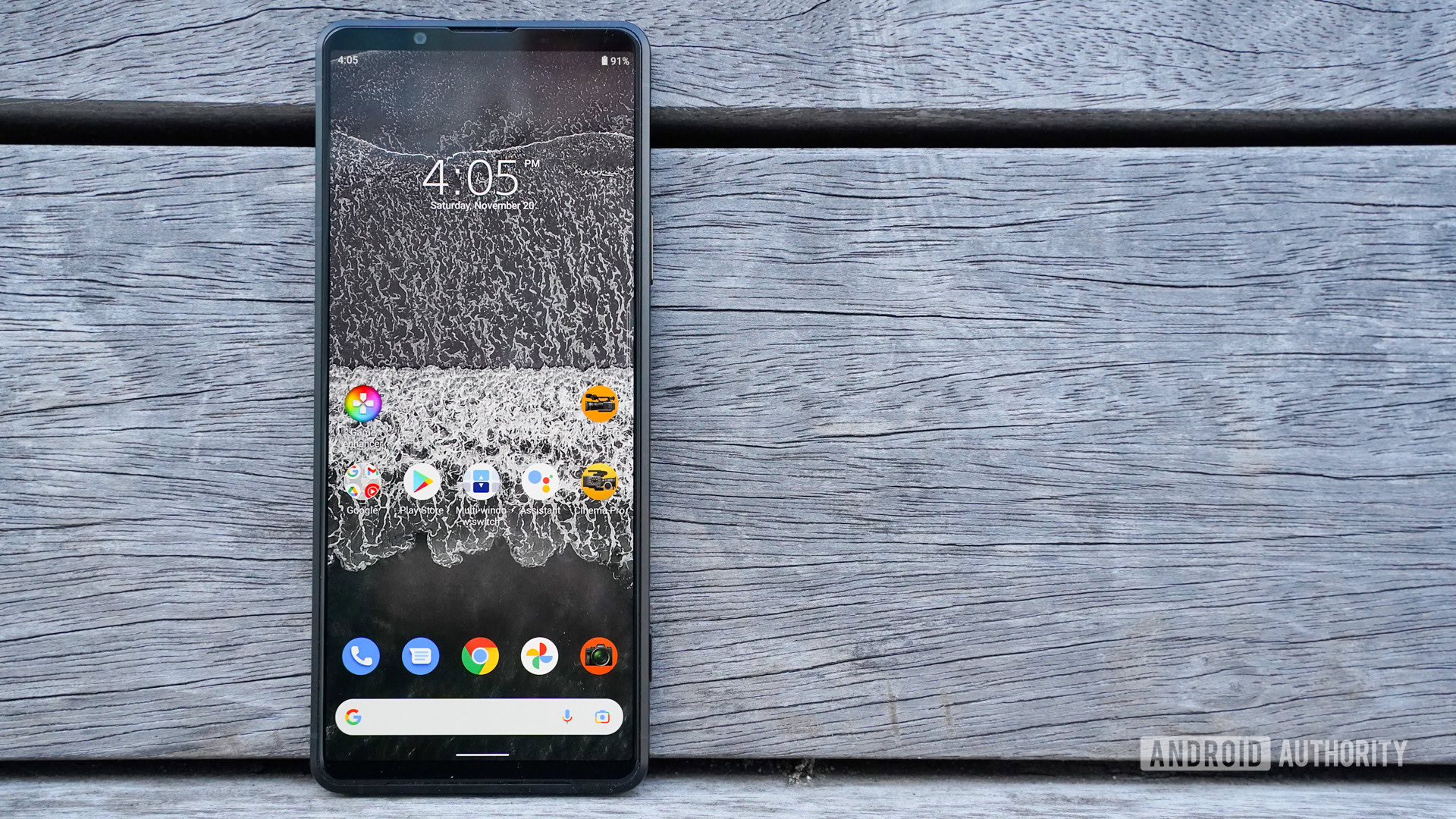
- Sony Xperia Pro-I (12GB/512GB): $1,799 / £1,599 / €1,799
Sony is back at it. The company has crafted another high-end, camera-focused smartphone called the Pro-I. The “I” stands for “Imaging,” says Sony. What sets it apart from other leading camera phones is the purported 1-inch primary camera sensor built inside. Sony claims the Pro-I is the first phone to use such a large sensor (though technically the Sharp Aquos R6 had one, too). That it gives it a leg up on the competition when it comes to imaging. The company clearly believes the Pro-I can stand in as a full-time camera for certain professionals, such as vloggers. In fact, Sony is marketing the phone more like a camera with a phone attached to it than the other way around. It calls it a “1.0-type image sensor camera with full smartphone capabilities.”
Sony is offering just one version of the Pro-I. It comes with 12GB of RAM and 512GB of storage built-in, as well as all the other high-end specs you expected to find on a phone at this price point, at least back in 2021. Speaking of which, the Pro-I launched at an eye-watering $1,799 in the US. You can get the phone from Sony directly or buy it from retailers like Amazon or B&H Photo. The phone officially went on sale back in December and is available in one color: black.
What’s it like to use the Xperia Pro-I?
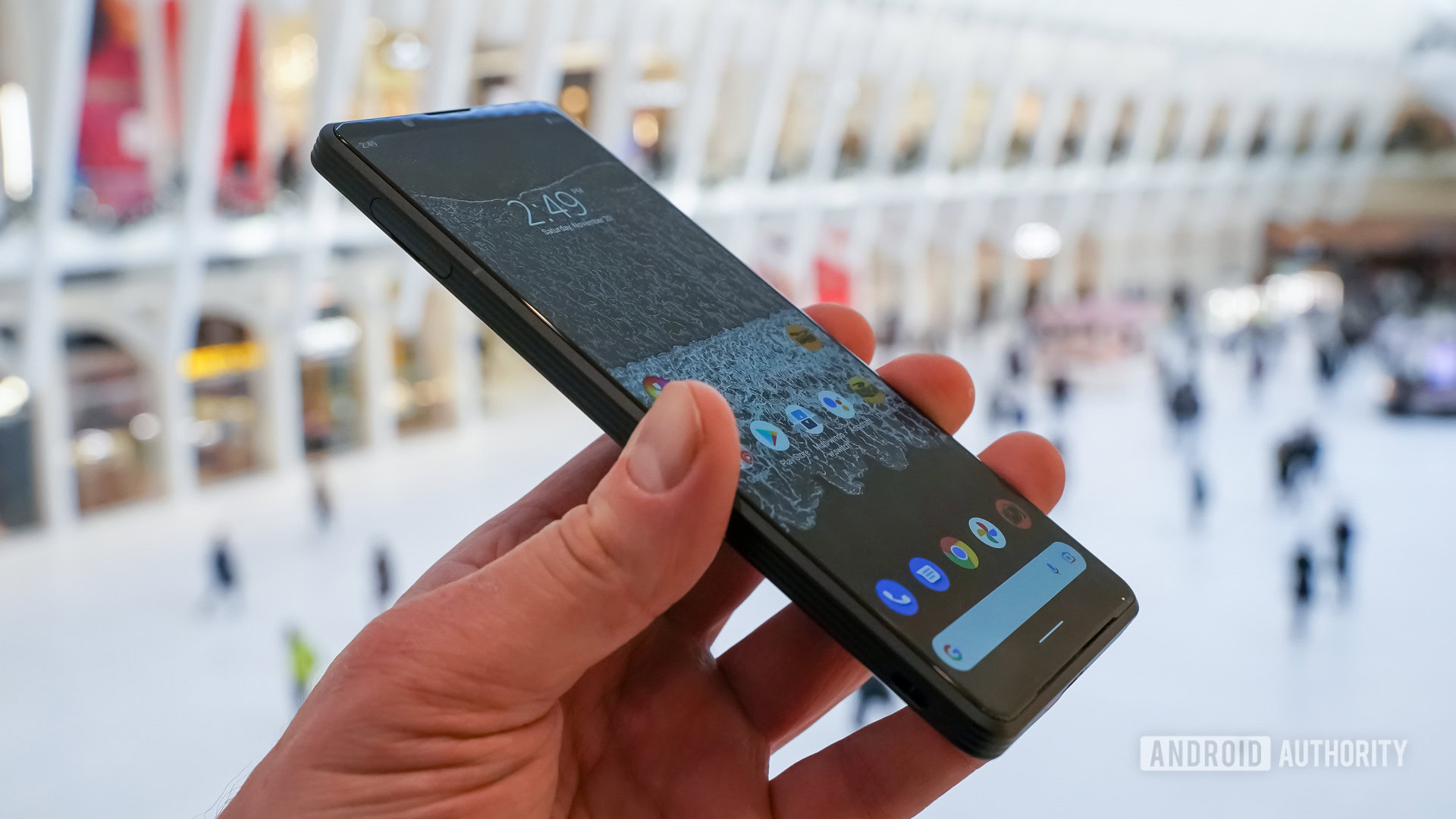
Once Sony picks a design it tends to stick with it for a few years. Thus, the Xperia Pro-I looks very much like the early 2019-era Xperia 1 and nearly every Sony phone since, including 2021’s Sony Xperia 1 III and Xperia 5 III, and 2022’s Xperia 1 IV. That is to say, it’s a tall, narrow device with a metal frame and glass panels front and back.
It’s hard not to notice the uncommon dimensions of the phone. The shape is partly due to the display’s oblong 21:9 aspect ratio. It is a bit longer than the screens on competing phones. Sony adopted this elongated form factor a few years ago due to the growing amount of video and gaming content created in that aspect ratio. It doesn’t help matters that there’s a slight chin below and a slight forehead above the screen. These serve to stretch the dimensions even further.
The phone measures 166 x 72 x 8.9mm, It’s as tall as a Pixel 6 Pro but not nearly as wide. If anything, it gives the Pro-I a look all its own. Though some might find it awkward to use. For example, the top of the screen is nearly impossible to reach with your thumb one-handed. At the same time, the relatively trim horizontal dimension makes this an easy phone to grip and slip into your pocket.
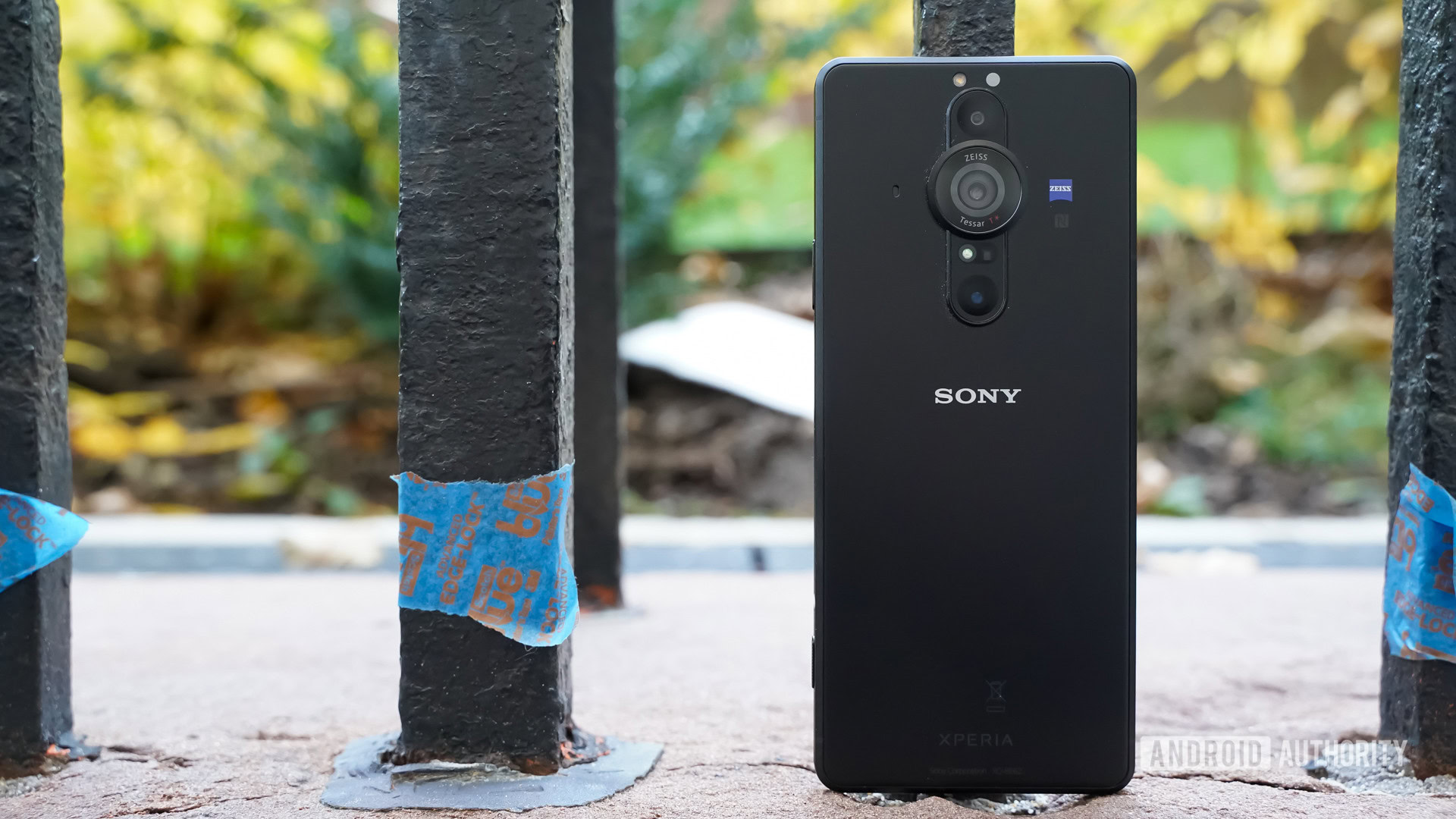
It’s a substantial piece of hardware. The metal frame is thick and rigid with grooves that run around all four sides. Sony picked Gorilla Glass Victus to protect the display and Gorilla Glass 6 to cover the rear. The glass panels are flat and the aluminum frame is beveled where the two materials meet, making for a smooth transition between the two. The quality of the materials and fit-and-finish are top-notch, though the phone feels heavier than its 211g weight would otherwise suggest. The Pro-I comes across as strong and delicate at the same time.
The dedicated camera button has a good profile, a nice patterned texture to it, and well-defined two-stage action.
Sony cluttered the side edges with lots of controls and functional elements. There are four buttons on the right edge alone: a volume rocker, power button, user-configurable shortcut, and a dedicated camera button. The volume rocker is way too short to effectively tell up from down when not looking. The power button, which doubles as a side-mounted fingerprint reader, is too flush with the surface and thus hard to find reliably. Training the fingerprint reader was no trouble at all and I found it to be quick and reliable — when I could find it. The shortcut button is a tiny dot that is also too flush with the metal framing. Thankfully, though, the camera button has a good profile, a nice patterned texture to it, and well-defined two-stage action like a traditional camera shutter button.
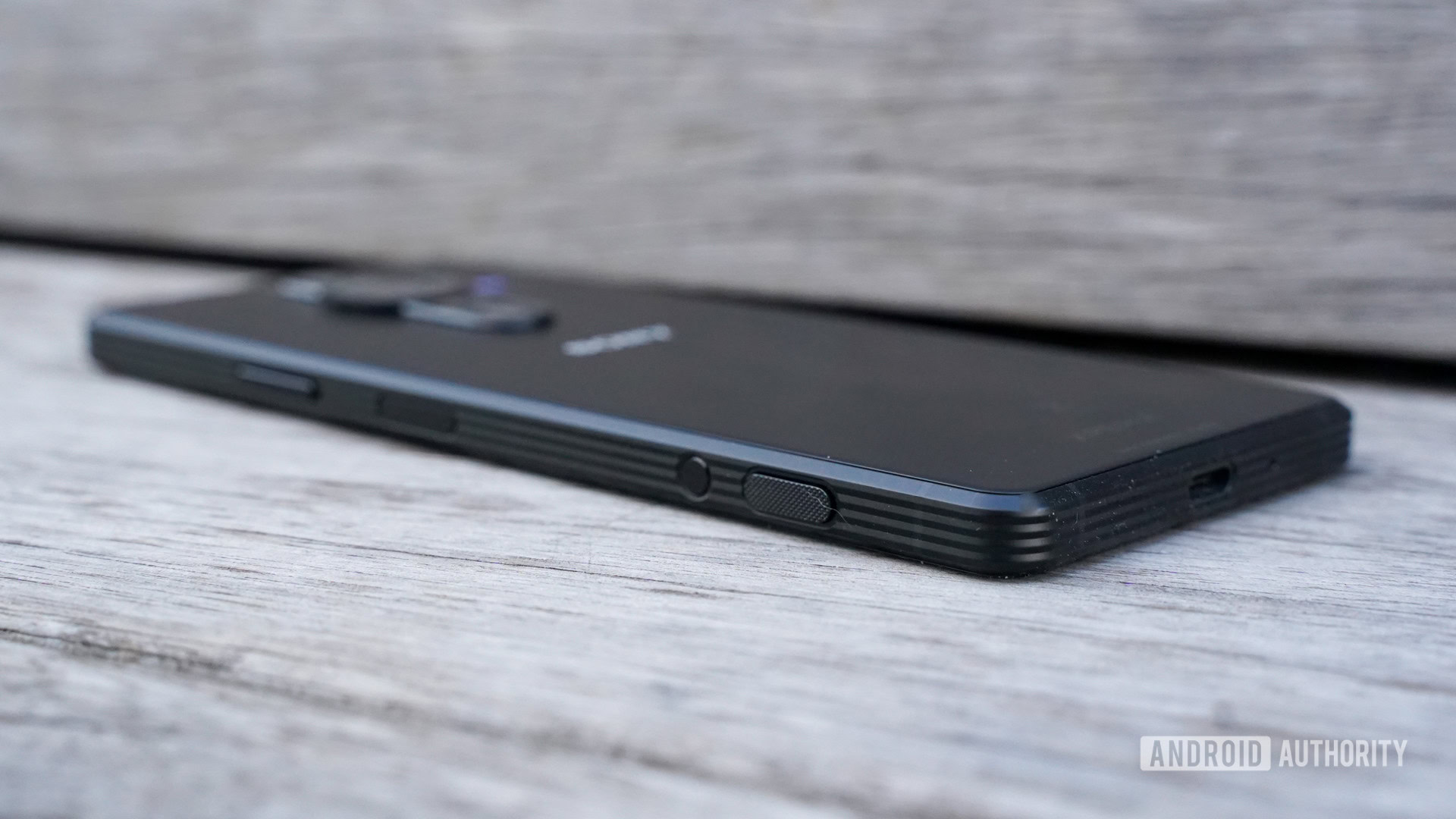
You’ll find a headphone/microphone jack on the top edge, a combo SIM card/microSD card tray and a lanyard loop for wrist straps on the left, and a USB-C port on the bottom. I like that Sony continues to make it possible to remove the SIM tray with your thumbnail, rather than a SIM ejection tool. This makes it much easier to eject the microSD card for transferring files than phones with trays that require an ejector tool. You won’t find a dedicated HDMI port, however, which is something that was included on the Xperia Pro to allow users to connect the phone to a camera as an external 4K monitor/viewfinder. A niche feature, perhaps, but an omission to note for pros.
Considering the dimensions of the sensor underneath the lens, Sony kept the size of the Pro-I’s external camera module in check; it aligned the three cameras in a row and centered them on the matte rear panel near the top edge. The main camera lens is about the size of a nickel and is flanked by the smaller secondary cameras along with the flash and focus elements. While it all looks very camera-y it doesn’t do anything to suggest that the Pro-I is supposed to be a camera first and a phone second.
Sony made sure the Xperia Pro-I carries an IP65/68 rating for protection against dust and water. You can drop it in about 4.5 feet of water and let it sit there for 30 minutes without worrying about damage. I held the phone under a running faucet for a minute and it’s none the worse for wear. Still, Sony recommends you keep it dry.
The Sony Xperia Pro-I is a well-made smartphone that looks a little weird thanks to its gawky dimensions but mostly works as it should.
Why is the Xperia Pro-I for “pros”?
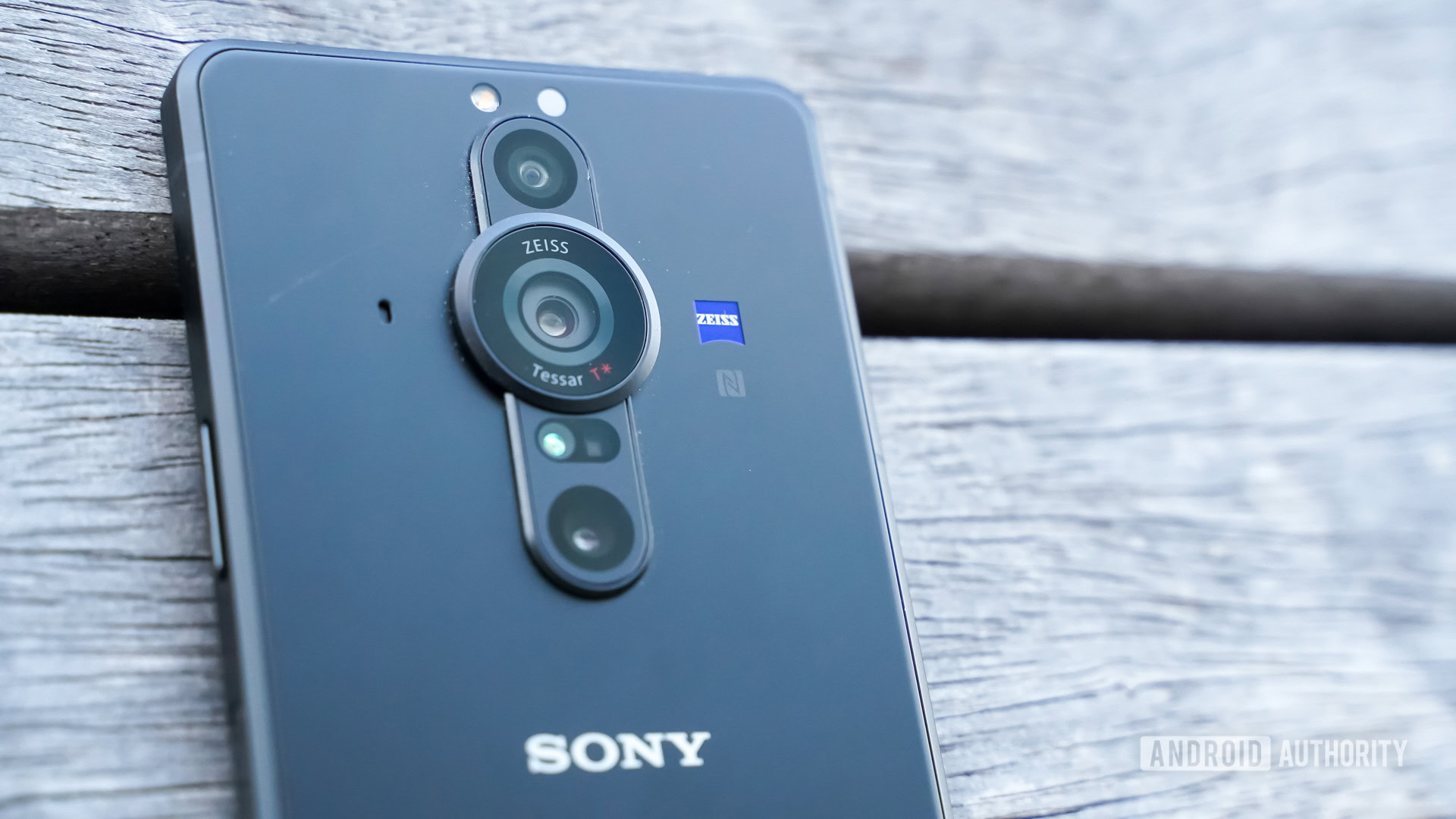
When you navigate Sony’s website, you’ll notice the Xperia Pro-I is not under the listing for “smartphones.” Instead, it’s under a separate heading for “professional smartphones” wherein you’ll find both the Pro-I and the Xperia Pro. Why is Sony making this distinction?
Chiefly, Sony sees its two Pro-branded devices as better options for people who make their living via photography and videography. The company suggests that some creators can use the Pro-I as their chief content capture device — replacing the need for a separate phone and standalone camera. By combining your pro-level camera and smartphone in one, Sony says some creative types might be able to save a few bucks.
How? The Pro-I has “pro-grade” features, such as a high-end camera sensor, advanced imaging software, and compatibility with accessories.
Let’s cover the hardware first. The main camera has a 12MP, 1-type Exmor RS sensor with OIS and glass ZEISS optics. It has the equivalent of a 24mm lens with an 85-degree field of view. The aperture is variable and can be toggled between f/2.0 or f/4.0 depending on the type of shot you want to take. Larger sensors can generally capture more light, which translates to better low-light photography with less noise.
Sony's marketing claims about the 1-inch sensor are a bit suspect.
There’s some question about the actual area of the sensor being used, however. Due to the limited distance between the lens and the sensor, the Pro-I can’t use 100% of the sensor’s dimensions. It’s using closer to the equivalent of 1/1.3 inches, which makes Sony’s marketing claims about the 1-inch sensor a bit suspect. This also helps explain the discrepancy between the Sony Alpha RX100 VII compact camera’s 20MP capture resolution and the Pro-I’s 12MP capture resolution, despite the sensor being fundamentally identical between the two.
Sony has not responded to our request to verify this information, but the key takeaway here is that the effective sensor size actually matches the Galaxy S21 Ultra of its time. Sony’s marketing here is a little questionable, to say the least.
The wide-angle camera has a 12MP, 1/2.5-inch sensor with a 16mm equivalent lens and 124-degree field of view at f/2.2. The telephoto camera has a 12MP, 1/2.9-inch sensor with a 50mm equivalent lens and a 48-degree field of view at f/2.4. Last, the selfie camera has an 8MP, 1/4-inch sensor with a 78-degree field of view at f/2.0. Other than the size of the main sensor, most of this is par for the $1,000+ flagship course.
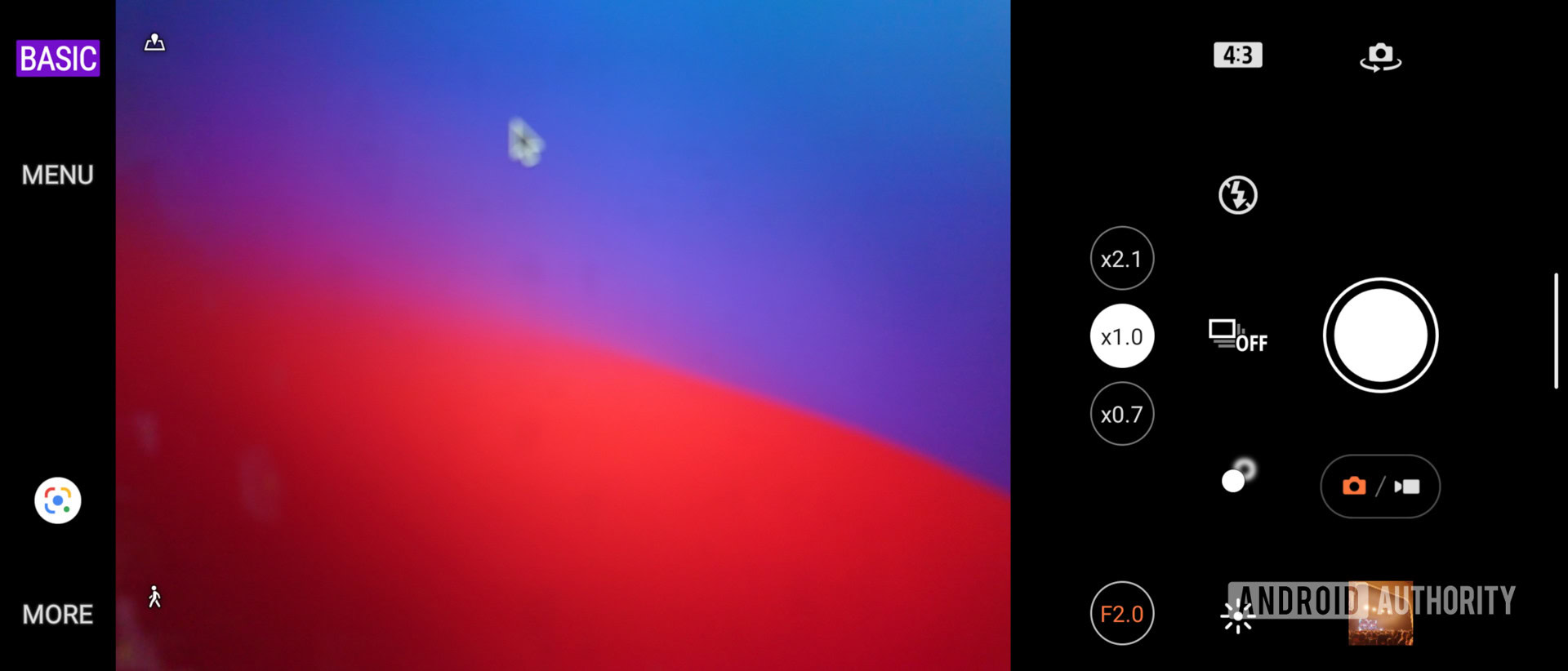
Then there are the advanced imaging and video apps you’ll find on the phone. In addition to the Photo Pro app, you’ll find the Cinema Pro app (both of which are also available to the Xperia 1 III) and the newer Video Pro app. These three tools, along with the Pro-I’s camera hardware, are your gateway to more real-camera-like capture capabilities. Or so Sony says.
The main camera app has two general modes of operation: basic (i.e. point-and-shoot) and everything else. In basic mode, to which the phone defaults, you can capture photos and video like you would most any smartphone. There are plenty of controls to adjust the camera’s behavior and settings, as well as toggle on/off features such as the flash, aspect ratio, aperture, and so on. This is the shooting mode to use if you’re in a hurry or wish to cede most creative controls to the app. In other words, it’s what normal phone buyers might use for snapping everyday pics on a regular smartphone.
Pros can shift gears to put the Pro-I’s powers to real use. Using a spinning software dial similar to a real camera’s mode selector, the app includes options for auto, program, shutter priority, and manual. Selecting any of these calls up a Sony Alpha camera-inspired menu that populates the right side of the screen (see above) where you can take total control over ISO, brightness, focus parameters, metering, white balance, and the like. These are advanced functions that take some know-how to use properly.
The layout is somewhat cluttered and can be overwhelming. However, if you’re coming from a Sony Alpha camera, you’ll likely feel right at home. I’ve been using Sony Alpha cameras for years and, yes, this menu does make some sense even in a piece of hardware that feels more like a point-and-shoot camera. I like that there is a wide range of tap-to-enable features that look like what I am used to seeing on my actual cameras. If you’re coming from a Canon or Nikon camera, though, this layout may present a learning curve to climb.
The app has a couple of annoying bugbears. For example, zoom. There’s a small indicator on the left that tells you which of the three lenses you’re using. You have to tap the indicator to switch between the lenses manually, sort of like you would have to change between three prime lenses on a real camera. You can pinch-to-zoom, but only within the confines of that particular lens. In other words, the 16mm lens allows you to zoom from 16mm to just 24mm, while the 24mm lens lets you zoom from 24mm to 50mm, and the 50mm lens lets you zoom from 50mm to 85mm. You can’t simply pinch to zoom from 16mm all the way to 85mm without switching lenses first. This is self-imposed madness.
I also dislike that the Photo Pro app takes away the software shutter button. You’re forced to use the hardware shutter button. Sometimes a software button is ideal. Last, there’s no way to quickly capture video when in any of the advanced photo modes. You have to return to the basic mode first, meaning you might miss an opportunity.
These aggravations aside, the app does provide knowledgeable users with much of the functionality of a real camera. How much mileage you get will be entirely up to you and how much time you’re willing to sink into learning the ropes (and some of Sony’s quirks).
Sony's Pro apps are not for beginners.
This is doubly true of the not one, but two videography apps. The first is called Video Pro, which is newer but also available on the Xperia 1 IV. This is the default app launched with a press of the user-assignable key on the phone’s right edge. Similar to the Photo Pro app, it offers users total control over the vast array of elements that go into capturing video.
You can adjust facets such as HDR, video stabilization, face/eye focus, frames per second, ISO, white balance, codecs (H.264, H.265), and more all with a few taps. It has sliders that allow you to adjust the level of zoom from wide to close, as well as focus from near to infinity. A few of the tools are buried a bit too deep for my tastes, such as face/eye autofocus. And, oddly, this app only allows you to capture video in the 16:9 aspect ratio. It’s not terribly difficult to use overall, but it doesn’t look anything like the video controls available on an Alpha camera.
The second app is called Cinema Pro, which is also available on other flagship Sony Xperia phones. It includes most of the same essential tools found in the Videography Pro app but arranges them in an entirely different way. Sony offered no explanation for the lack of consistency between the two apps’ controls.
There are two big features, however, that separate Video Pro from Cinema Pro. The first is the latter’s addition of pre-loaded capture profiles such as Venice, Opaque, Warm, Cool, Soft, Mono, and such. Each of these applies a filter that adjusts the overall look and feel of the footage you capture. Sort of like the way Instagram filters work, but they are applied as you capture the video, not after the fact. Sadly, there aren’t that many of them. Worse, you can’t create and store your own. Sure, you can adjust the individual settings to generate your own effect, but the Pro-I doesn’t allow you to save those settings for later use. The second big difference is that the Cinema Pro app shoots video in the 21:9 aspect ratio (same as the screen), rather than 16:9, and you can’t adjust to other aspect ratios. This is a confounding limitation.
Both video apps pack advanced project management functions that allow you to select where the files are stored, what codec is used, how sound is captured, how focus is treated, and similar. If you’re trying to juggle multiple video projects at a time, these can help manage them in a way that makes some sense. The biggest hurdle they help you clear is sorting your 16:9 footage from your 21:9 footage.
Put simply, the Xperia Pro-I’s “Pro” apps are not for beginners, as the names suggest. They might not even be for casual videography enthusiasts. Each requires more than basic knowledge of photography and videography fundamentals to put to proper use and a fair bit of adjustment to Sony’s occasionally odd design choices. There’s no question, however, they provide a much wider degree of creative latitude when shooting video than what’s available from a regular smartphone — though the Xperia 1 IV and Xperia 5 III get fairly close.
Sony also suggests the Pro-I offers pro-level photo and video editing on-device, but that’s simply not the case. Any time you choose to edit photos the phone directs you to the Google Photos app, which is preinstalled on most Android phones. Google Photos does permit for some significant tweaking, but nothing I’d consider pro-grade. You’d need an app like Snapseed or Lightroom for that. Moreover, video clips can be trimmed in terms of length and pasted together, but you can’t apply effects or otherwise tweak the look or tone of clips after the fact. You’ll need to offload your video clips to a PC for that level of editing. Most phones offer this same level of editing when it comes to video.
The only benefit you have for editing on the Xperia Pro-I is the “Creator mode” display setting that reproduces more natural colors. We’ll come back to that later, but ultimately, it’s not enough to support Sony’s claims. If you want to edit photos taken on the Xperia Pro-I, you’ll need professional software to do so.
Sony suggests the Pro-I offers pro-level photo and video editing on-device — that's simply not the case.
The last big “pro” feature of the Pro-I is its compatibility with Sony-made and third-party accessories. For example, Sony has an array of gadgets to augment the experience of capturing content with the camera, err… phone. When buying the phone from Sony direct, you can choose to bundle it with a Sony-branded external microphone, an external monitor that snaps onto the back of the Pro-I, as well as a gimbal for steadying those shots. The external monitor, in particular, was designed for the Pro-I and hangs onto the phone’s ridged edges. It’s meant to allow you to use the main camera for shooting self-facing 4K video. Sony touts these extras as essential for today’s influencers-in-training. We were not able to test any of them for this review.
Sony has also rolled out a software update that turns the Pro-I itself into an external monitor. Instead of attaching a second display to your phone, it instead morphs the device into a sharp 4K OLED monitor for use with your Sony Alpha-series camera. All it takes is a USB-C cable and some extra rigging to keep the device attached. Once connected, you can also stream video directly to YouTube using the Xperia Pro-I as a passthrough. You can even keep an eye on your shutter speed, aperture, and ISO through the large panel. We haven’t had a chance to test the feature yet, but we’ll circle back when we’ve had a chance.
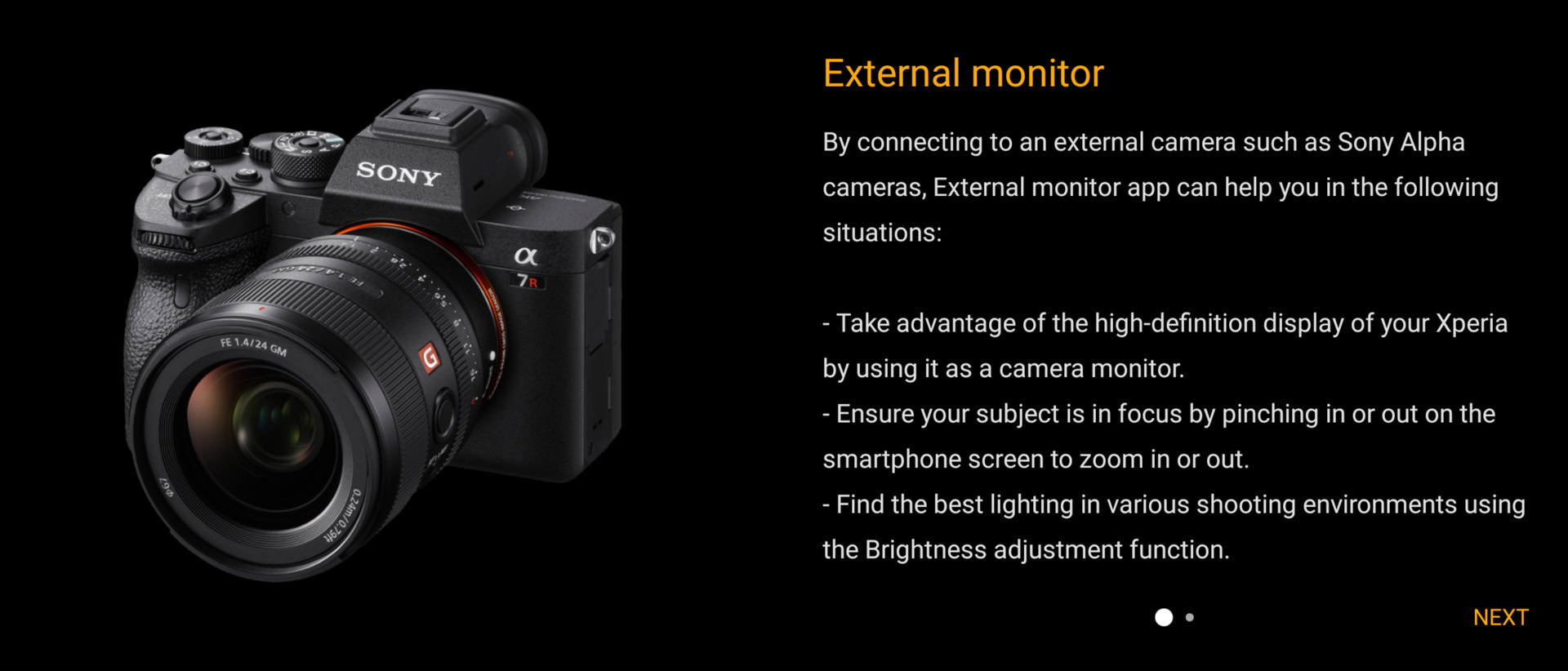
It should go without saying that many phones support extras such as microphones and gimbals. The universe of add-ons available to the iPhone alone stretches far and wide. No matter your phone, you can make your set-up as simple or as complicated as you wish depending on your capture needs or shooting style. The Pro-I does, though, include bundled software that makes exporting a video feed to the external monitor a simple process.
Does all this extra focus on the camera lead to measurably better photos and video? Let’s find out by looking at some samples.
How good is the Xperia Pro-I camera?
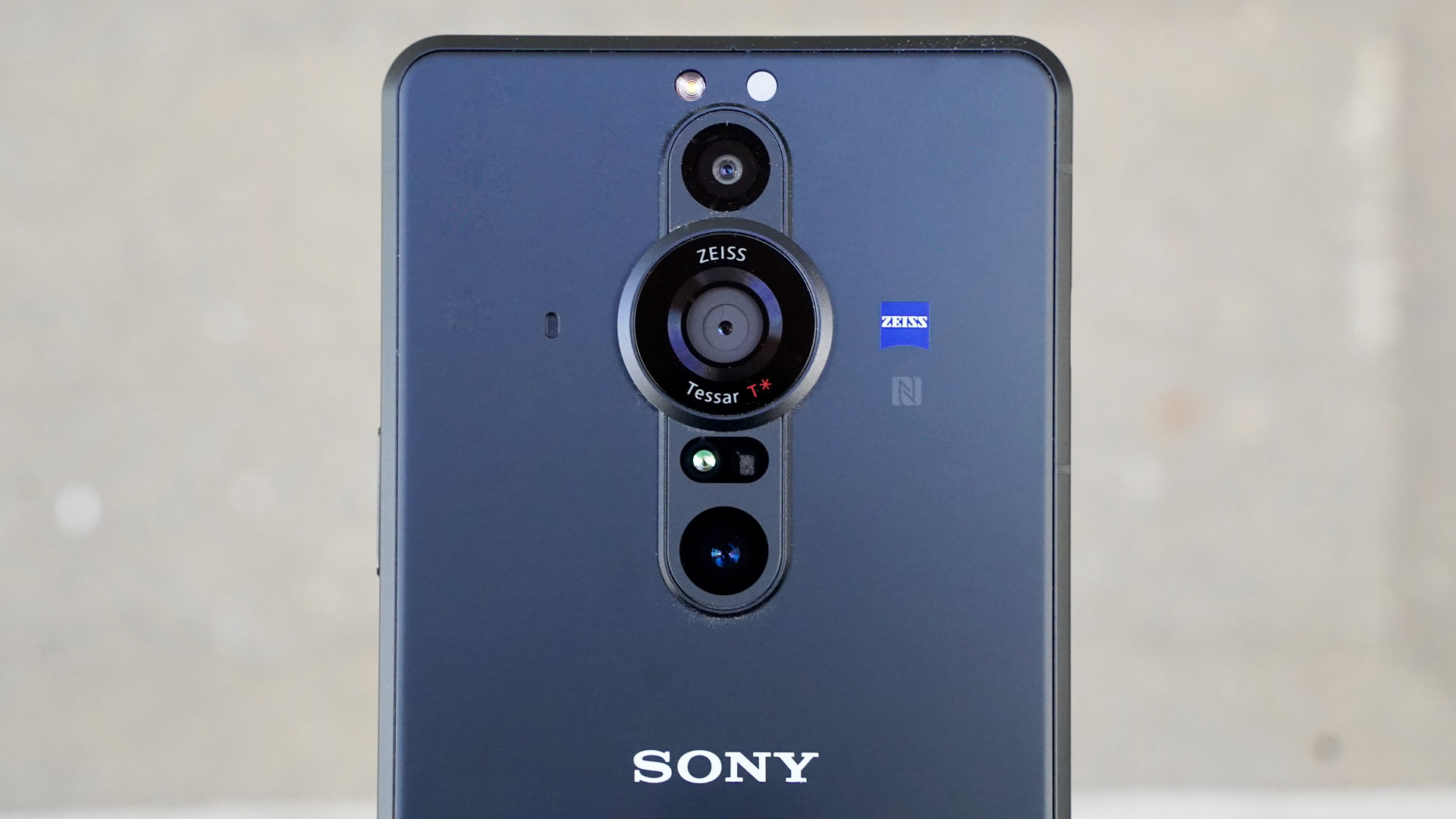
Here’s where we really start digging into the meat of this review and it’s time for the Xperia Pro-I to put up or shut up. Sony made some really big claims, namely that the phone can negate the need to carry a dedicated camera along with the phone you already have, all while serving as a primary content capture device and a smartphone.
How are the photos straight out of the camera with no tweaking? They’re definitely interesting. When we reviewed the Google Pixel 6 Pro’s camera, we called the results “accurate” to the lighting and conditions in which the photos were taken. With the Xperia Pro-I the photos are even more accurate — though perhaps at the expense of aesthetics.
Colors are somewhat muted and kept as close to neutral as possible. Some images might lean a little bit more toward yellow than blue, but overwhelmingly the balance is right in the middle. More importantly, colors are not boosted during processing in the way they might be from, for example, a Samsung phone. As a result, the photos captured by the Xperia Pro-I aren’t what many regular people might want from a traditional camera phone. After all, sometimes those boosted colors really help a photo pop.
However, the Pro-I’s accuracy does give pro-level photographers way more latitude to make adjustments after the fact in post, particularly if you choose to capture in 12-bit RAW. In other words, you’re likely going to want to tweak the photos you get from the Pro-I, but that’s not a bad thing.
To my eyes, focus could be better all around. It’s not that the photos are soft or blurry, but there’s no question clarity could be improved across the board. This is especially apparent when you drill in on details. Noise levels could be lower, too. There was a surprising amount of noise in the images I captured with the phone (no matter the lens.) Again, this is something that’s only visible on close inspection — something pros are apt to do.
The Xperia Pro-I’s color accuracy gives pro-level photographers ample latitude to make adjustments in post.
Perhaps the biggest detractors from the camera are exposure and HDR performance. Many of the shots I took turned out underexposed. One reason could be the aperture. Remember, the max aperture available to the phone is f/2.0. This is well behind class leaders that offer f/1.5 and f/1.8 lenses. The faster apertures on some competing phones mean way more light reaches the sensors. I would expect Sony’s processing to make up the difference (and you can, manually, using the exposure tool), but a phone this expensive should be better at exposure no matter the aperture.
Speaking of aperture, the Pro-I supports dual aperture which allows you to switch between f/2.0 and f/4.0 at will. The f/2.0 setting creates a more dramatic background bokeh, while background details are a bit more in focus when you use the f/4.0 setting. Why include this feature? I suppose it could make up for the phone’s lack of a dedicated portrait mode, which is a really odd omission for any phone in this day and age. If you want that bokeh shot of your bae this holiday, be sure to use the f/2.0 setting. Below are some shots taken at f/2.0 and f/4.0. Note the clarity of the tree and lights.
As for HDR, a fair number of the shots I took simply didn’t reveal the amount of detail I was expecting to see in the darker regions. Look at the tree branches in the photos of the building, for example. They appear darker than they were in person and lose lots of detail. Further, the building itself hardly stands out from the background.
The Xperia Pro-I has a usable range of zoom, but Sony kept it in check. Thanks to the lens configuration, you have native 0.7x, 1x, and 2.1x options between the three cameras. The 2.1x telephoto camera can zoom further by a factor of 3x digitally, making for a total zoom level of 6.3x. The color profile across the three cameras isn’t quite perfect, but it’s not far off either. Items shot at the maximum optical range of 2.1x are nice and clean. Pushing things out to the 6.3x level, however, introduces an obvious amount of noise and granularity. It’s not bad, certainly not as bad as some of the 10x and 20x implementations we’ve seen, but it could be a little sharper.
Shots taken in low light vary. Times Square may often look bright, thanks to the neon. You can pick up plenty of detail in the crowd of people. The first problem here is that there’s a pink cast to the photos that simply wasn’t visible with the naked eye. More to the point, there’s far more noise than I care to see from a $1,800 imaging device and the foreground is too dark.
Then there are the concert shots I captured. Now, I know shooting photos in a concert setting is fraught with difficulty. The lighting is changing constantly and that really impacts the results. Even so, the HDR should have helped out a little and it often didn’t. What bugged me most was that despite bright-enough lighting conditions during the concert, the Pro-I sometimes defaulted to night mode, which meant longer exposures and wasted, blurry shots. These musicians could both be much sharper, and the shot looking back at the hall should have far more detail in the crowd at the bottom of the frame. A patient pro could see these results after the first round and easily adjust the Pro-I’s settings to get the look they want on subsequent shots.
The 8MP selfie camera did a serviceable job in the photos I took. I spotted some of the same problems in selfies as I did with shots taken with the main camera. That means the photos were a little flat in the color department. Selfies could also have been a little sharper and less noisy. The Pro-I does include a selfie portrait mode. The results aren’t bad and the software-generated bokeh is good enough. Casual users might be happy with the selfies and portraits from the Pro-I, but professional pixel peepers might not be. You’re certainly not getting the clarity you would from a real camera with a portrait lens attached.
Getting good video results with the Xperia Pro-I is fairly easy. What’s slightly aggravating is that there are three different video recording apps on this phone and each offers a different feature set. It takes time to figure out which features are available in which app. Ultimately, using the Photo Pro app is the simplest way to record video. It actually provides a lot of control over the parameters of the video you capture and once you develop your own workflow it’s a smooth process.
The Pro-I captures up to 4K at 120fps for ultra-sharp and smooth video, as well as 1080p at 30/60fps, slow-motion, and so on. In addition to the resolution settings, you can choose stereo or mono audio capture, enable wind/noise reduction, turn on/off video stabilization, and manage the face/eye autofocus feature. The standard footage I shot on basic mode looked really good. It was clean, properly exposed, sharp, and showed good white/color balance. As with the camera, though, the color of video came across a bit muted and flat.
Switching to the Cinema Pro or Video Pro apps nets you just-as-good results if you mash down the record button and let the Pro-I handle things. These modes of course give you more room to flex your creative muscle. In the end, you get out of it what you put into it.
Sony’s pro offering captures exceptionally accurate photos that give professionals the most possible room to tweak in post.
How does the Pro-I compare against other flagships? Let’s remember that Sony is not pitching the Xperia Pro-I to regular people. It is clearly marketing the phone to professionals. Regular flagship phones from Apple, Samsung, and Google have cameras that are tuned in an entirely different way. Their goal is to deliver the best/most pleasing results right away with the simple press of a button — no editing required.
With that in mind, Sony’s pro offering captures exceptionally accurate photos that give professionals the most possible room to tweak in post-processing. Regular folk, however, may think the photos come across as flat or lifeless. Given the difference in approaches, we can only say that the Sony Xperia Pro-I produces photos that are distinct from the competition.
Whether or not they’ll live up to the expectations of professional photographers is another matter entirely. I have my doubts. To take but one quick use-case example, pro photographers often need to adjust aperture. This is helpful whenever they want to offset shutter speed and other factors. The simple toggle between f/2.0 and f/4.0 on this phone simply doesn’t replace the functionality. Which even the most basic camera would offer. It’s these trade-offs that make the Xperia Pro-I not quite the complete camera replacement it wants to be. Even if it gets impressively close considering the hardware limitations of the smartphone form factor.
You can view full-sized photo samples in this Google Drive folder.
How is the 4K screen?
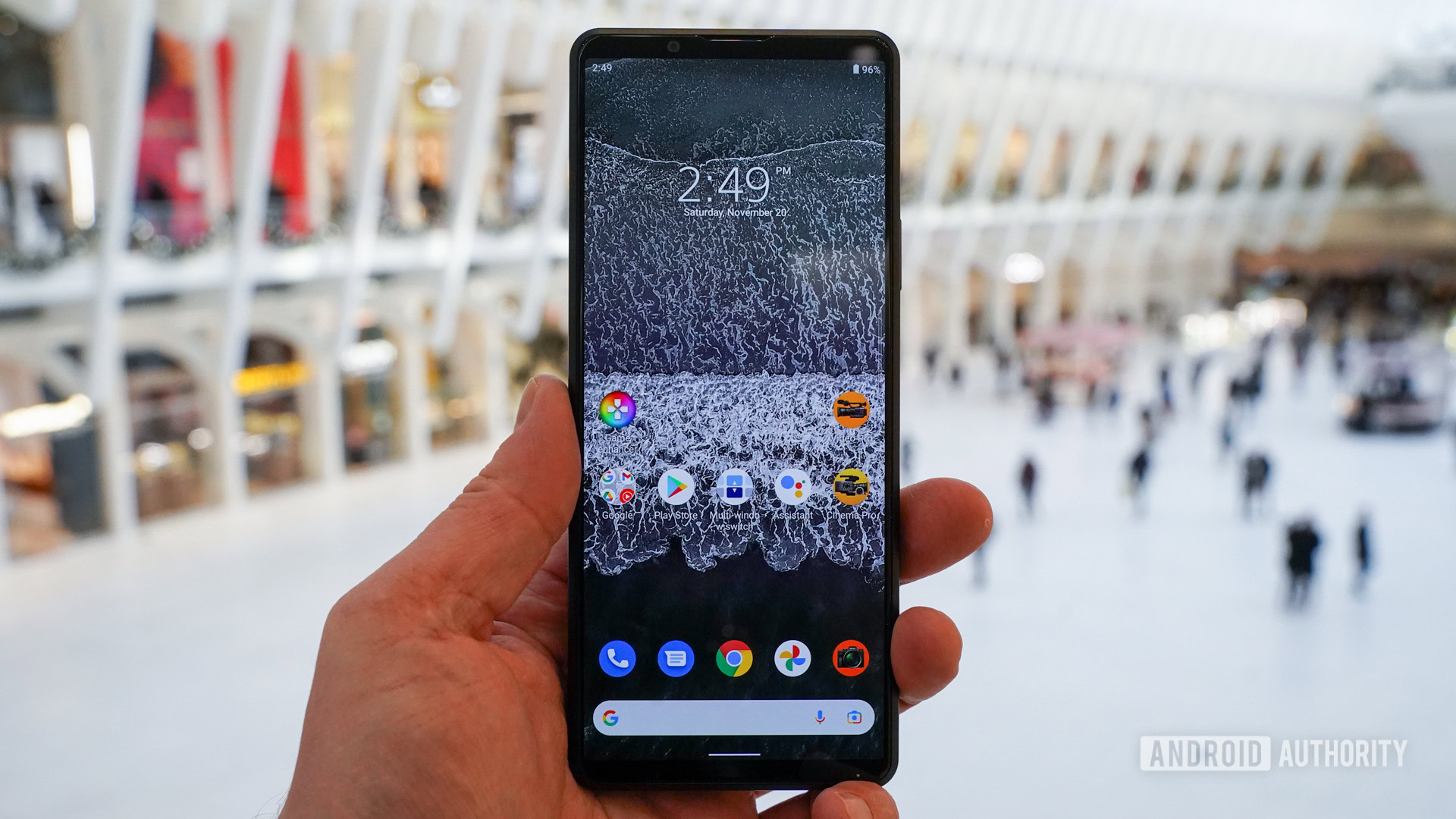
The Sony Pro-I’s display is pixel rich, bright, colorful, and fast. Sony was also sure to offer several advanced tools to help creators potentially get the most from the Pro-I’s screen. Here’s the deal.
The vast majority of phone makers have settled on FHD+ or QHD+ resolutions for their flagships. Not Sony. Nope, it has been dabbling with 4K screens for several years and made sure to give the Pro-I a panel that packs as many pixels as possible. It includes 3,840 x 1,644 pixels for what Sony calls 4K resolution. The actual 4K spec mandates 3,840 x 2,160 pixels, so the Pro-I is 500 pixels short in one dimension due to the 21:9 aspect ratio. With a pixel density of 613ppi, however, there’s no question the phone has a crazy rich screen that renders everything crisply and smoothly.
It’s an OLED panel with HDR support. It is absolutely bright enough to use practically anywhere. In particular, using the phone outdoors under the full glare of the sun was no problem at all. Contrast and color support are excellent.
The Xperia Pro-I has a phenomenal screen that rivals any phone you can buy.
Keeping in stride with the competition means a 120Hz refresh rate is vital. The phone supports two modes. It is set to 60Hz out of the box, but you can switch it to 120Hz should you wish. The 60Hz setting remains constant, while the 120Hz setting is adaptive, meaning it changes based on the activity at hand. Sony claims using 120Hz has an “unmeasurable” impact on battery life. All I can say is hot damn does it look good. Combining the high refresh rate with the 4K resolution delivers the smoothest experience I’ve seen on a smartphone display.
On the whole, it’s a phenomenal screen for a mobile phone. I tuned in the highest-quality 4K/HDR content I could find from Netflix and it looked fan-freaking-tastic. Watching videos was a pure pleasure. The screen also upscales all content to 4K, so even regular HD stuff looks really good.
In addition to the typical controls for the display (brightness, blue light, nighttime), Sony included an entirely separate display setting called Creator Mode. This is meant to provide a “faithful reproduction of the creator’s intended vision” through the 4K screen thanks to specially developed image processing, color gamut, and 10-bit color. Put more simply, the screen will render whatever content you’re capturing as accurately as possible when in this mode. You can set the Xperia Pro-I to switch to this display mode automatically depending on the app you’re using, such as Photography Pro or Videography Pro. It is meant to help when shooting pictures or video and editing in posts.
What’s cool is you can access Creator Mode directly from the video capture apps. Specifically, when looking at video clips in the Photo Pro and Video Pro apps, Creator Mode will adjust the display’s color profile. As previously noted, this is intended to help with on-device photo and video editing. To my eyes, however, this feature did little more than warm things up a bit (i.e., make them more yellow in tone).
There’s also a tool for manually setting the screen’s white balance. This is another tool that’s available from within the Photo Pro and Video Pro apps. It’s an advanced tool that regular people should probably leave alone. Though if you’re buying this enthusiast phone you might well be serious about the white balance of your display. In which case, you can tweak it to your heart’s content.
Sony gave the Pro-I a state-of-the-art, high-resolution display. Anyone can enjoy the extreme pixel count and smooth action of the OLED. And while creators who are more serious about color than me may gain a small boost from the Creator Mode and white balance controls, I can’t say they did much.
Does the battery hold up?
Sony has slowly been putting bigger and bigger batteries into its flagships and finally reached the point where it equals much of the competition — at least as far as capacity is concerned. That’s good news for potential Pro-I buyers, but does the high-res, 120Hz display drain the battery in a hurry?
The Xperia Pro-I has a 4,500mAh battery slotted into the slim shell. Some competing flagships are in the neighborhood of 5,000mAh or more, but 4,500mAh is sufficient for this class of phone. With the screen set to the stock 60Hz refresh rate, the phone put up an average of 6.5 hours of screen-on time per day. That’s about average for a modern flagship.
When set to 120Hz adaptive, screen-on time dipped only a little bit to about six hours per day. That’s really not a bad drop all things considered. Overall battery life ran from morning to night with no trouble at all. In fact, I had a hard time depleting the battery completely despite spending lots of time using the camera and streaming high-quality video.
The phone charges somewhat rapidly with support for Power Delivery PPS (and standard Power Delivery). Using the included 30W wired charger, the Pro-I will ramp up from 0% to 50% in about 30 minutes. It takes close to 100 minutes to reach a full charge, which isn’t the fastest, but far from the worst we’ve seen from premium mobile devices.
Wireless charging is a baffling miss considering the price.
Sadly, the phone does not support wireless charging. Sony hasn’t said why. Whatever the reason, it’s a major missing feature for such an expensive device with smartphone functionality, even if Sony wants to market it as a camera.
Anything else?
- Audio: The Pro-I excels at audio. As noted, there’s a 3.5mm headphone/microphone jack on the top of the phone. It provides one avenue to get high-quality audio off the device when syncing your content with PCs or other equipment, not to mention sound for your wired headphones. Forward-firing stereo speakers are on board as well, and they generate excellent, balanced sound when playing games or watching movies. Moreover, the phone supports Bluetooth 5.2 and a vast array of audio specs and technologies. These include 360 Reality Audio, 360 Spatial Sound, Dolby Atmos, DSEE Ultimate, and aptX HD audio. In other words, no matter how you choose to consume your audio, the Pro-I offers a high-quality option (as long as your headphones and content also support the same techs).
- Software: Sony ships the phone with Android 11 and its light-touch UI skin, which the company calls Xperia Home. It is, however, upgradeable to Android 13 by now. You’re treated to a near-stock Android experience with basics such as the home screen, app drawer, quick setting menu, and settings menu all intact. Sony uses its own fonts and icons here and there, but the basic UI framework should be familiar to anyone who’s used a recent version of Android. It’s very fast. There are some handy features, too, including Side Sense from easier one-handed use and the dead-simple split-screen tool for multitasking.
- Software updates: The company has not been totally clear on updates for its phones. It said that its recent flagship, the Xperia 1 IV, will receive two years of OS upgrades. We expect the same story for the Xperia Pro-I, meaning that Android 13 might be the last OS update the phone gets. Sony’s commitment to monthly or quarterly security updates is even murkier. It certainly does not match market leaders Google and Samsung when it comes to supporting its devices with software over time. This is something you should think about before jumping on the Pro-I bandwagon, especially considering the price tag.
- Performance: The phone ships with a Qualcomm Snapdragon 888 processor, which is not the latest SoC out there but is still plenty powerful, even in 2023. It’s paired with a solid 12GB of RAM and an exceptional 512GB of built-in storage. The Snapdragon 888 is a fine engine for the phone. In terms of everyday usage, the device felt fast and smooth, despite the strain from the 4K, 120Hz screen. It never felt slow or bogged down, even when using the advanced videography apps. Sony kept thermals in check most of the time. I noticed the phone got warm when running some benchmarks and when recording 4K video at high frame rates for more than about 10 minutes. The Pro-I ran our homegrown Speed Test G benchmark with no problems. It scored a respectable time of one minute, 19 seconds, which is right where a Snapdragon 888 should perform.
- Gaming: Sony gave the Pro-I some gaming features. It includes Sony’s Game Enhancer, which allows you to adjust colors and effects, assign in-game actions to hardware keys, multitask via pop-up windows, as well as automatically record the last 30-seconds of gameplay. Game Enhancer also acts as a default home screen for your games. The display supports a 240Hz response rate, which means the screen will react to your finger input faster than a standard screen might. Some gaming handsets support response rates up to 480Hz, but 240Hz ain’t too shabby. The phone also supports the DualShock 4 (buy one here) controller and includes a vibration mode to enhance gameplay with haptics.
- Connectivity: The Pro-I has a good connectivity suite, though it could be better. First, Wi-Fi 6 is on board, which is the minimum we expect on modern flagships, though we’d prefer to see Wi-Fi 6E for future-proofing purposes at this price. I experienced excellent Wi-Fi performance while evaluating the phone. It also supports sub-6GHz 5G but not mmWave. This mostly impacts potential users in the US. It’s a strange omission given it was a big selling point for the original Xperia Pro for rapid file transfer over the fastest 5G networks. I ran the phone on T-Mobile’s sub-6GHz 5G network and it performed just okay. Last, the phone has a USB 3.2 gen 2 port, It supports data transfer speeds up to 10Gbps, as well as HDMI over USB.
Sony Xperia Pro-I specs
| Sony Xperia Pro-I | |
|---|---|
Display | 6.5-inch OLED 3,860 x 1,644 4K 21:9 120Hz |
Processor | Qualcomm Snapdragon 888 |
RAM | 12GB |
Storage | 512GB MicroSD (up to 1TB) |
Battery | 4,500mAh 30W wired charging No wireless charging |
Camera | 12MP main camera, f/2.0/f/4.0, 24mm, 1-inch sensor 12MP ultra-wide, f/2.2, 16mm, 1/2.5-inch 12MP telephoto, f/2.4, 50mm, 1/2.9-inch 8MP selfie camera, f/2.0 Video: 4K at 60fps/120fps |
IP rating | IP65/IP68 dust/water resistant |
Connectivity | Wi-Fi 6 Bluetooth 5.2 5G (sub-6GHz) USB-C |
Color | Black |
Dimensions Weight | 166 x 72 x 8.9mm 211g |
Value and competition
The Sony Xperia Pro-I’s value equation really depends on what it is that you value. On the surface, it was hardly different from the already-expensive Xperia 1 III ($829 at Amazon). Sure, there were a few hardware upgrades between the two. Most notably the larger camera sensor. That said, at least on paper, the two phones share an awful lot considering the $500 price difference between them. The newer Sony Xperia 1 IV ($1398 at Amazon) is also quite a similar phone with a familiar focus on enthusiasts, but it does offer more power thanks to the Snapdragon 8 Gen 1 chipset.
Deciding between the Sony Xperia 1 IV and the Xperia Pro-I used to be a much harder decision. The consumer-focused Xperia 1 IV was $200 cheaper. Now, both devices are heavily discounted most of the time, at least in the USA. The Xperia Pro-I has been constantly dropping, and the sweet spot seems to be close to $1,000 these days. Alternatively, the Xperia 1 IV is still relatively pricey, usually costing between $1,300-$1400. The tables have turned. While the Xperia 1 IV may be better in some departments, some content creators might enjoy the Xperia Pro-I. Especially considering it’s now actually significantly cheaper.
The Pro-I is clearly aimed at creators, with a particular focus on vloggers. The phone’s video powers, combined with the optional video monitor, mic, and gimbal, make for a capable vlogging platform. Sony’s math suggests you might save yourself some cash with the Pro-I if you buy it over a dedicated vlogging camera, accessories, and a separate smartphone. This could be true, though it really hinges on what equipment you select. Either way, you’re looking at well over $2,000 with the Pro-I and associated gear. That’s a huge chunk of change, though were you to buy a regular $1,000 smartphone and a dedicated camera such as Sony’s own Alpha RX100 VII ($1,299), you’d be looking at even more before adding accessories.
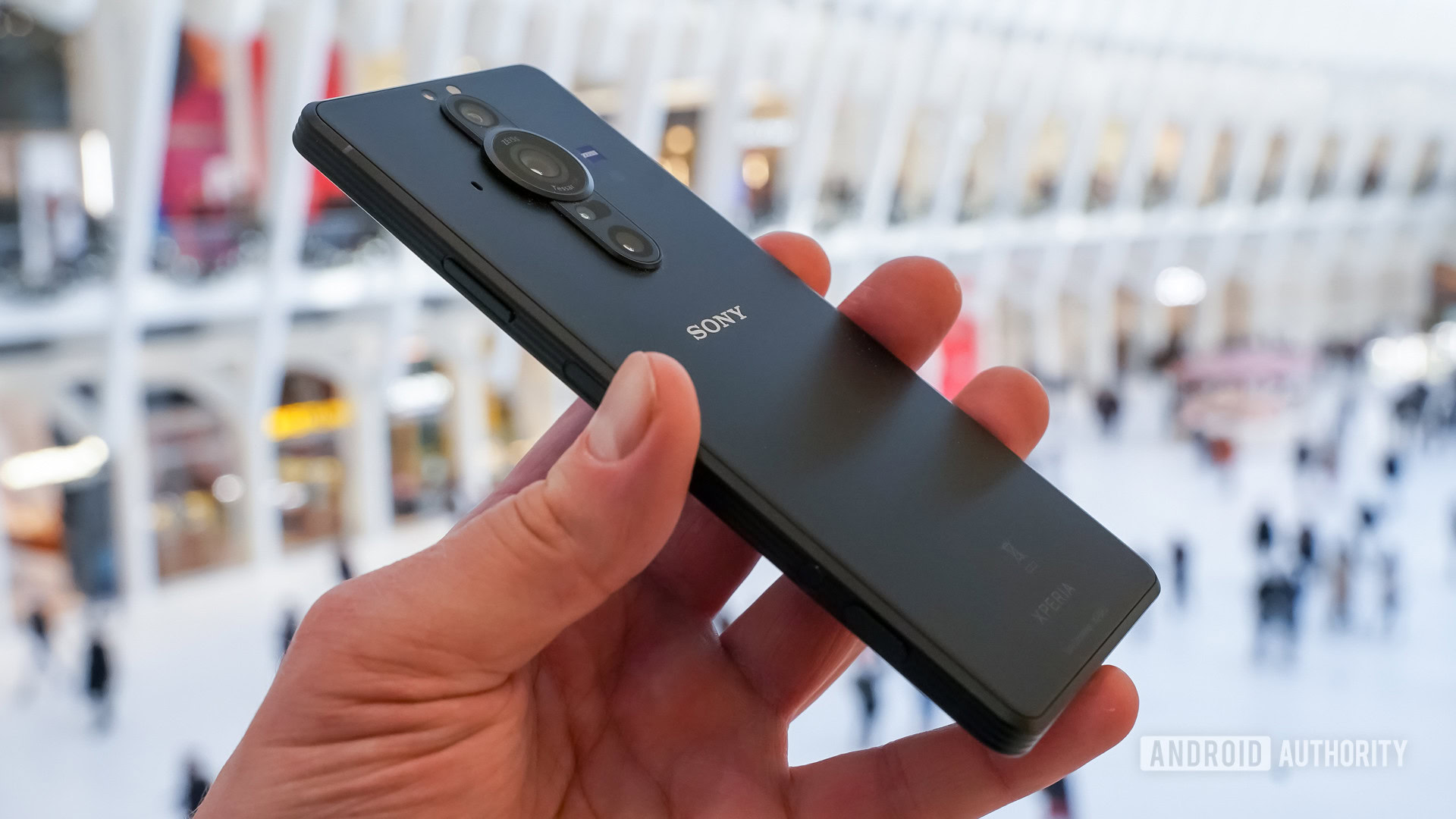
Otherwise, a phone like the Pro-I doesn’t have any real competition, at least not in the normal sense. To start, its MSRP is $400-$900 more expensive than today’s regular flagship phones. And even at its usual current $1,000 reduced price, it’s just as expensive as most high-end leading smartphones. Moreover, it includes niche software and design features that simply aren’t available to the majority of devices in the market — even Sony’s own camera phones, which already offer some niche extras. It’s not meant to go head-to-head with popular fare from Apple, Google, and Samsung. That doesn’t mean that there aren’t alternatives to the Pro-I, though.
Let’s start with Sony’s stable. In addition to the already-mentioned Xperia 1 III and Xperia 1 IV, there’s the previous-gen Xperia Pro ($1998 at Amazon). Compared to the Pro-I, it is running on outdated processing hardware, but it does give you a dedicated HDMI port and mmWave 5G for offloading content on the go.
At $1,799 before you get to the official first-party accessories, Sony is asking a hell of a lot for the Xperia Pro-I.
From a video-capture perspective, the iPhone is the clearest potential stand-in. The iPhone 13 Pro ($899.99 at Best Buy) launched closer to it, and it came with its Pro Res video capture mode, offered some of the highest-quality video you could get from a mobile device. You also got better 5G connectivity, and perhaps even more accessory compatibility than the Pro-I. It was also substantially less expensive, even if you go for the 512GB model. The iPhone 13 Pro Max ($999.99 at Amazon) offered similar advantages in a larger form factor and with superior battery life. Of course, now we have the iPhone 14 Pro ($799.99 at Amazon) and iPhone 14 Pro Max ($999 at Amazon), which are slightly upgraded. For starters, you could argue they have a larger 1/1.28-inch sensor than the equivalent of 1/1.3 inches Sony touts.
Samsung’s Galaxy S23 family is likely the best option for those seeking exceptional camera and video performance on more of a budget. The Galaxy S23 Ultra ($1199.99 at Samsung) is a phenomenal camera phone — one of the best you can get. Bargains on the Ultra and the cheaper Galaxy S23 devices are plentiful right now, but you’re losing the Pro-I’s advanced video apps and the more true-to-life image capture.
If you’re looking for one of the better point-and-shoot cameras you can get on a smartphone — no post-editing required — you’d be silly not to consider the Google Pixel 7 ($545 at Amazon) and Pixel 7 Pro ($589.98 at Amazon). They may not be perfect devices, but they take great shots for most people. Not to mention they are pretty affordable for high-end smartphones, especially the vanilla model. Google’s phones (as well as Samsung’s and Apple’s, for that matter), are also guaranteed Android version and security updates beyond anything you’ll likely get with the Xperia Pro-I.
Sony Xperia Pro-I review: The verdict
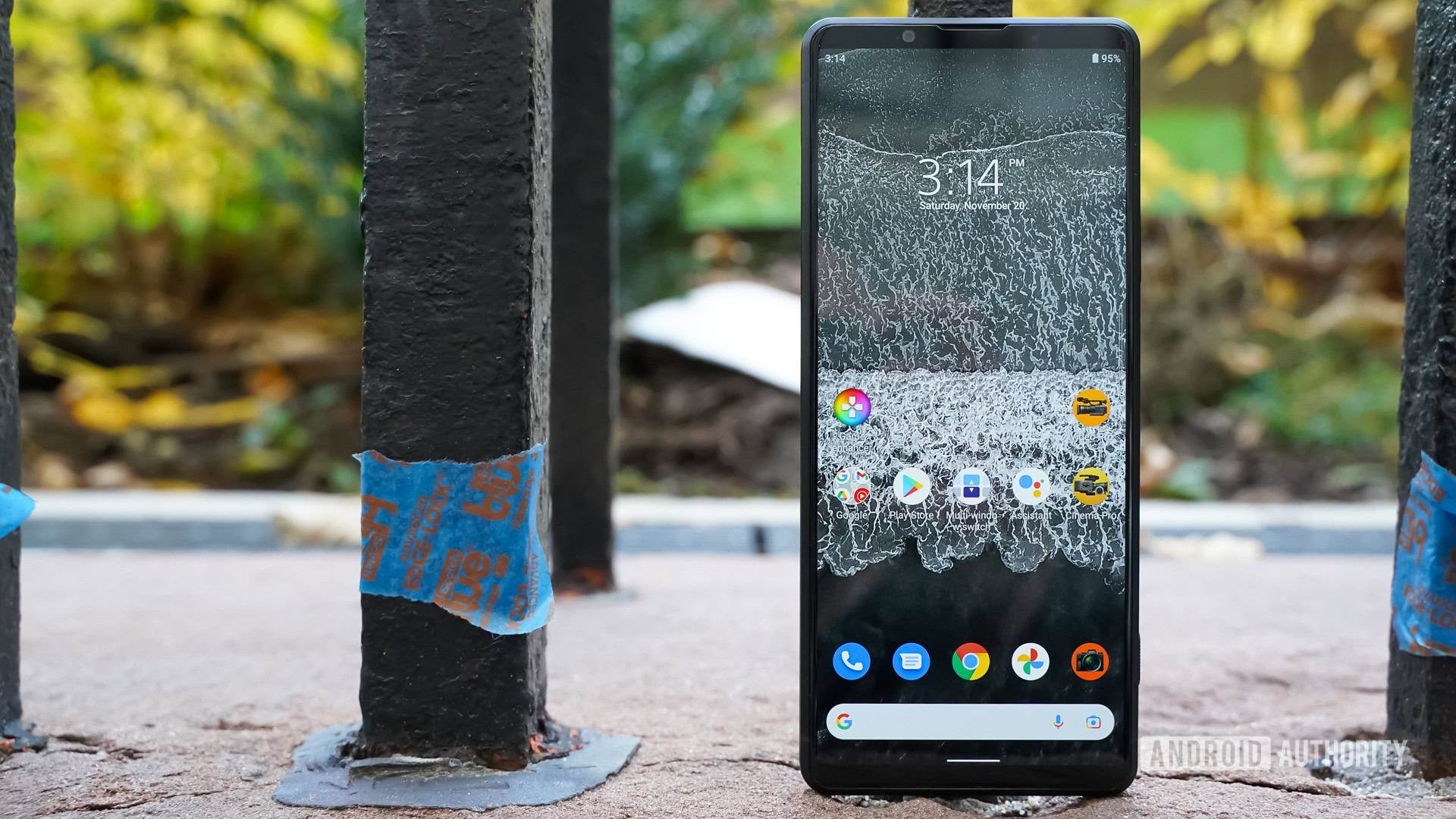
The Sony Xperia Pro-I has a lot going for it, but the brutal price tag puts it out of reach for the bulk of smartphone users around the world. And even at its current discounted $1,000 price, it’s still too expensive for an aging device. Especially with plenty of newer, much more exciting competitors around. Good thing Sony doesn’t care much for regular smartphone shoppers. Instead, it’s hoping to earn the dollars of well-healed imaging professionals seeking to condense their content capture rig into a single do-it-all camera phone.
Let’s talk about the good stuff. The hardware is excellent. The glass-and-metal build is flawless in terms of materials and manufacturing quality. The elongated design may not be for everyone and yet the Pro-I stands on its own in the market. The 4K(-ish) OLED 120Hz display is luscious and the battery life is quite good. Even when the screen is at its most power-consuming settings. The phone’s speed and performance is right up there with the best devices in the market. Connectivity options are solid (though not bleeding-edge). Audio experience is sublime. These combine to make the Xperia Pro-I a good smartphone when taken at face value.
The brutal price tag puts the Sony Xperia Pro-I out of reach for most buyers, but professional photographers and videographers may find value here.
On the not-so-good side of things, you’ve got a fuzzy picture with respect to software support over time. And you’re missing wireless charging. Then there’s the price. The $1,799 price tag is already tough to stomach, and the current discount isn’t amazing either. What’s more, carriers didn’t offer the phone on monthly installment plans, which would help defray the sticker shock. These combine to make the Pro-I a questionable deal as a smartphone.
But the Pro-I isn’t just a smartphone. It’s a camera replacement that includes phone features. Or at least that’s how Sony wants you to think of it. In this light, the phone features are a solid addition to a decent imaging device. The Xperia Pro-I’s camera performance is entirely different from those of standard flagship devices of its time. It’s meant to appeal to pros seeking accuracy and flexibility over everything else. In that respect, it mostly succeeds. The imaging tools are far more advanced than your standard smartphone. These will surely give knowledgeable content creators what they need to get the look they want. Whether or not it can replace the need for dedicated hardware is another matter entirely. One which professionals will decide with their own wallets.
Who should buy the Sony Xperia Pro-I? Not regular folks. Most consumers will be better served by a common flagship that offers point-and-shoot simplicity. The Pro-I is for those with the means and know-how to use it properly.

Sony Xperia Pro-I top questions and answers
The Xperia Pro-I isn’t worth it for the average smartphone user. However, some imaging professionals will find value in the Xperia Pro-I.
Yes, the Sony Xperia Pro-I does feature a microSD card slot.
Yes, the Xperia Pro-I carries an IP65/68 rating, meaning it will survive in up to 1.5m of water for up to 30 minutes.
The Xperia Pro-I does not support wireless charging.
You can only get the Xperia Pro-I in black.
No, the Xperia Pro-I doesn’t support mmWave technology, but it does support sub-6GHz 5G.
Yes, the Xperia Pro-I is a dual-SIM device.